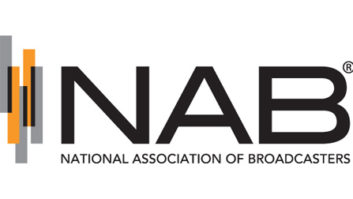
The FCC’s order on AM revitalization is already having an impact on stations, consultants and engineers. This is one in a series of Radio World interviews with industry tech and regulatory experts, commenting on the FCC’s October actions in support of AM radio stations in the United States.
Mark Lipp is a partner with law firm Wiley Rein LLP.
Radio World: The AM order is out. You filed comments on behalf of a lengthy group of joint commenters. What are their common interests, and what do they think of the order in general?
Mark Lipp: I have heard from several AM licensees since the issuance of the AM Revitalization Order. Their common interest was supporting the proposal to transition the AM service to Channels 5 and 6 which, of course, was not considered by the FCC. That proposal was first offered formally in 2007 during the digital transition and has been proposed again several times since then. But as far as the FCC was concerned the timing was always wrong because those TV channels were not available for use by any other service except TV. A group that I am involved with demonstrated that the two channels could be shared with the AM service since Channels 5 and 6 are rarely used by full service TV stations and if one of the channels is in use in a particular area, the AM stations could be allocated on the other channel. However, the FCC is too busy with the incentive auction process, repacking and related issues to consider this proposal. Instead, the FCC offers unprotected FM translators to AM stations.
RW: How significantly will the multi-part translator plan change the health and balance of the AM and FM bands?
Lipp: The general consensus is that Class C and D stations should get the first opportunity to apply. They need the most help. However, the larger owners with Class C and D stations will most likely outbid the smaller AM owners in urban markets where spectrum is scarce. As a result, diversity will not benefit from this process. Only in the smaller markets where there are more frequencies available and less chance for a conflict, will the smaller AM stations benefit. Of course, to the extent unused translators are being moved significant distances from rural areas to more urban areas, there will be more potential for interference to full service stations and more of a chance that the translator may not survive. Hopefully, AM licensees will use caution in evaluating the potential for such interference before they invest too much money in these translators.
RW: What do you think of the mechanics of how the translator windows will work, and how stations will apply?
Lipp: AM licensees have been finding out that the FCC did them no favor with the upcoming 250 mile waiver window because FM translator owners are increasing their prices significantly. They have the leverage at this time and can wait the AM licensees out. But the purpose of the Order was to help struggling AM Class C and D stations. Instead it will cost them more than their AM stations are worth in many cases and then they may be forced to bid in an auction if they are in conflict with other AM applicants and then spend even more money. The original proposal for a filing window for new FM translators would have been far more preferable.
The FCC did not seem to grasp this reality at page 55 in the Order (the Reg. Flex. Analysis) where the FCC tries to justify the 250 mile waiver window by saying that “this procedure is expected to lower prices for FM fill-in translators for AM stations by opening up the available market, thus benefiting AM station owners, and would also benefit small businesses owning FM translator stations.” So far, the only ones benefitting are the translator owners who have excess translators from the last translator window.
Other comments about the mechanics of the translator window concern the apparent absence of a settlement opportunity in the 250 mile window auction process. This is particularly important because the FCC has stated that if an AM licensee participates in the 250 mile window and does not succeed (due to a conflicting application), it cannot apply in the subsequent window for a new translator even if there is another frequency available. Had there been a settlement opportunity in the 250 mile window, it would not matter to the AM licensee that it is disqualified from participating in the second window.
RW: Aside from the translators, which of the FCC’s actions in this order do you think will have the most impact?
Lipp: It appears that the reduction in the minimum efficiency standards which allow shorter towers will provide the most benefit since the ratchet rule was being waived in most cases anyway and the principal community coverage flexibility, while valuable in some situations, is not used as often.
RW: Are there technical concerns or potholes that you see in the details of this order, things radio engineers and owners should be prepared for?
Lipp: AM licensees unfamiliar with FM translators should be cautioned that if they invest in a translator, there is no guarantee that the relocation will prove successful if interference is caused.
RW: Is there anything the FCC didn’t do, that you wish it had done?
Lipp: Yes, as mentioned, AM licensees interested in using FM translators would be far better off and would rather transition to Channels 5 and 6. The FCC is offering a short term solution to long suffering AM station owners with no hope for a long term solution. If the FCC would start the process as many other countries have already done and consider using channels 5 and 6 at least on a shared basis, then, AM owners would have some hope that their investment in continuing to broadcast with AM facilities would have a future.
RW: Any other observations, or comments you’ve heard from others, that you find relevant?
Lipp: The effort to improve the AM band is a worthy one as long as AM stations must continue to operate in this band. There are many good proposals in the Further Notice and it is expected that many more will be proposed. Hopefully the FCC will make this proceeding a priority and not delay another two years to issue a Second Order. I am also hearing that those licensees who have expanded band facilities are surprised and dismayed that they must turn in one of their stations after all of these years. They don’t understand how the public benefits from the loss of these stations. Otherwise, the proposed use of the expanded band for new stations, if there is interest, is long overdue.
Read a previous Q&A in this series, here.












